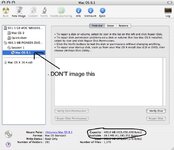Phipli
Well-known member
Just to be clear, an ISO file isn't a PC format. It is a CD structure dumped to a file. The Toast image format is fundamentally an ISO file.
Genuine truth as a person who doesn't use modern macs... What on earth is a .cdr? I'm not aware of that being a period correct extension (I mean, no extension is).
But, just to be clear, iso is good you can open them in toast and several other programs. There is even System 6 software for isos.
you can open them in toast and several other programs. There is even System 6 software for isos.
Genuine truth as a person who doesn't use modern macs... What on earth is a .cdr? I'm not aware of that being a period correct extension (I mean, no extension is).
But, just to be clear, iso is good


